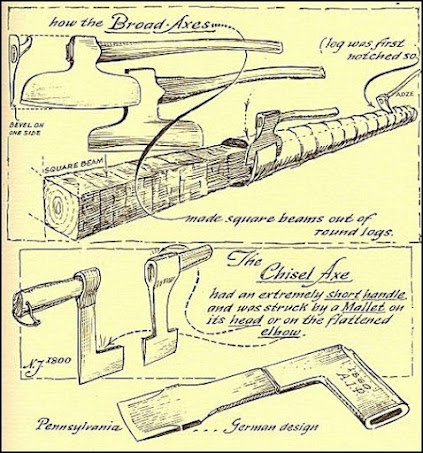The Art of Hewing Logs for Pioneer Log Houses
For the pioneer log cabin builder, the notion of using round logs was swiftly dismissed by his wife's unwavering resolve. To her, a true home required flat walls, a sanctuary where their children could thrive away from the elements. Thus, the process of hewing logs became an essential step in the journey from wilderness to homestead.
Hewing a log was no simple feat—it demanded strength, skill, and a keen eye for detail. Armed with a broad axe, a pioneer could transform rough-hewn logs into smooth, flat-sided timbers fit for crafting a sturdy abode. With each swing of the axe, the pioneer marked a straight line, a guide for the meticulous work ahead.
In the days before modern conveniences, pioneers relied on basic tools and sheer determination. Without chalk lines or chainsaws, they embraced the simplicity of handcrafted precision. Standing close to the log, the pioneer wielded his broadaxe with expertise, ensuring that the flat side faced the timber with each strike. The curved handle of the broadaxe spared his knuckles from harm, a small mercy amidst the toil of frontier life.
To ease the strain on both man and tool, pioneers often laid wooden blocks beneath the logs, protecting their broadaxes from the unforgiving earth below. Some innovators even fashioned shorter axe handles, adapting to the challenges of the wilderness with ingenuity and resourcefulness.
Legend has it that pioneers reserved the months of March and May for hewing their logs, a testament to the seasonal rhythms of frontier life. As the days grew longer and the earth awakened from winter's grasp, they embarked on the arduous task of crafting their homes from the very land they sought to tame.
Once hewn, the logs were numbered with care, ensuring that each piece fit seamlessly into the structure of the cabin. From foundation to rooftop, the pioneer's diligence ensured that every timber played its part in creating a sanctuary amidst the wilderness.
In the annals of American history, the log cabin stands as a testament to the resilience and resourcefulness of the pioneer spirit. Hewn from the very earth beneath their feet, these humble abodes became havens of comfort and hearth, where families forged a new life amidst the untamed wilderness. As the sun sets on the frontier horizon, casting long shadows across the land, the legacy of the pioneer log cabin endures—a testament to the enduring spirit of those who dared to build their dreams from the timber of the wild.

